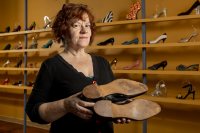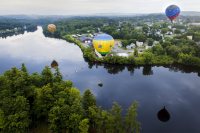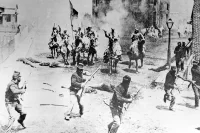
Wilhelm Kramer, a German immigrant who settled in Lewiston in the late 1800s, worked as an elevator operator in the Bates Mill. On a December day in 1889, he fell into an elevator shaft, suffering severe injuries.
“The outlook for him is critical,” reported the Lewiston Evening Journal on Dec. 19, 1889. “He is suffering much.” Kramer died two days later, at age 46, and was laid to rest in Lewiston’s Riverside Cemetery, his grave marked with a simple granite headstone.
And there, on a cloudy and chilly April day, a group of Bates students paused during a tour of the cemetery. It was a tour with a purpose. The students, all part of the course “Public History in the Digital Age,” were road-testing their new self-guided, audio cemetery tour.
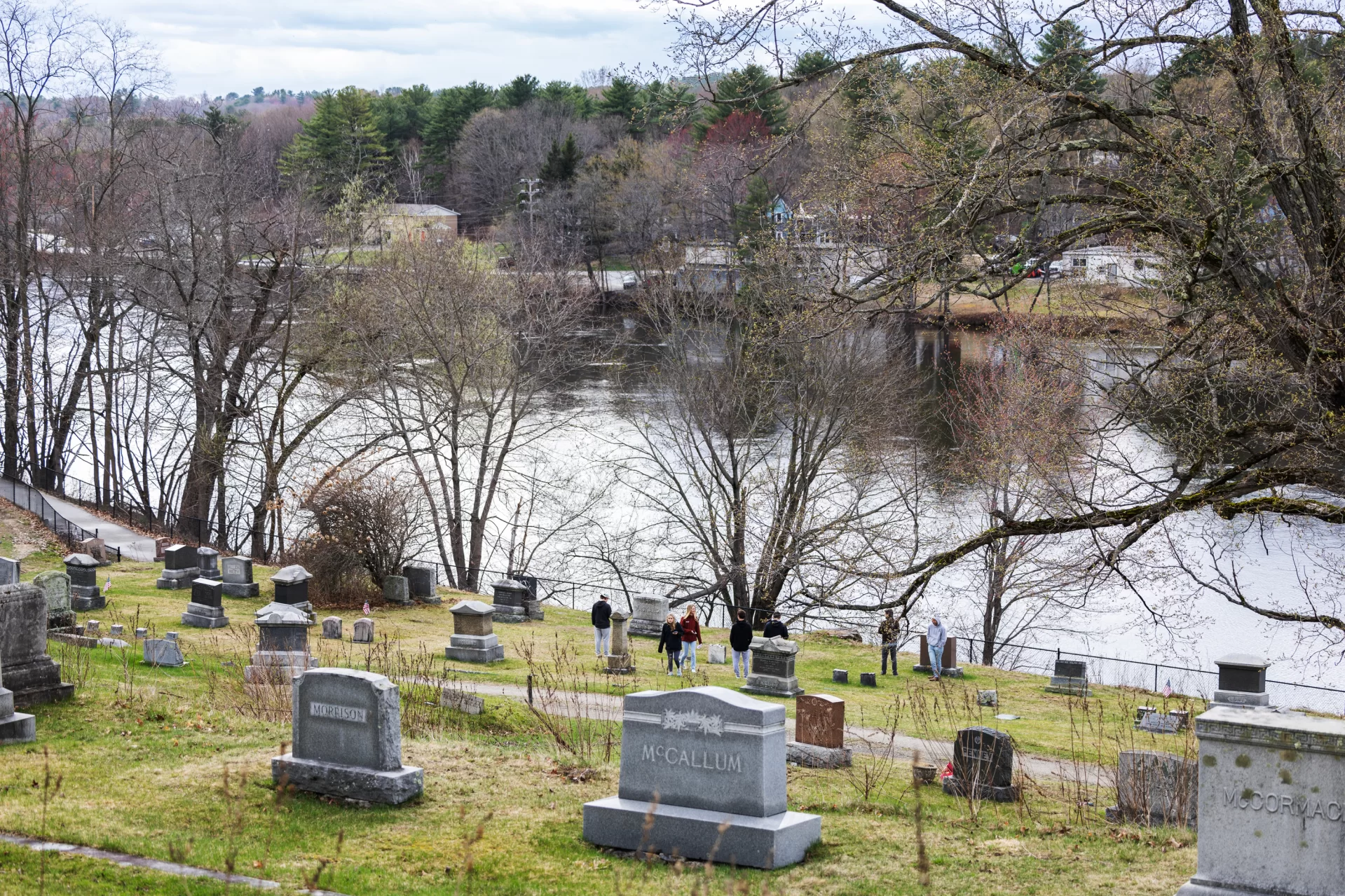
Working from historical sources in the Muskie Archives and elsewhere, the students had researched various people buried in the cemetery. Then, they wrote and recorded audio stories about their people and uploaded them to ECHOES, an app that supports geolocated audio self-guided tours and other immersive experiences.
Taking the Tour
To listen to the cemetery tour, you don’t need to be in Lewiston. Download the ECHOES app on your phone, search for “Riverside Cemetery Tour,” and tap into one of three tours: Civil War, Immigration and Medicine, or Maine Industry.
The project brings together the personal and professional interests of their professor, Anelise Hanson Shrout, assistant professor of digital and computational studies. Shrout is a digital humanist and historian, interested in how technologies can help us to understand history in new ways.
She has specific expertise in the experiences of everyday people in the 19th century, including a forthcoming book about why people sent money to Ireland during the famine of 1845–52 and a digital archiving project that explores the lives of immigrants who were incarcerated in hospitals in 19th-century New York City.
Shrout also knows her cemeteries, and serves on the board of Riverside, located a walkable half mile from campus along the Androscoggin River. “I do love cemeteries, and I love this cemetery in particular, both because I live nearby and because it has such a rich history of Lewiston.” She pointed to a band of trees. “That’s the old Lewiston potter’s field, where people whose families didn’t have the money for a formal funeral or gravestone were buried.”
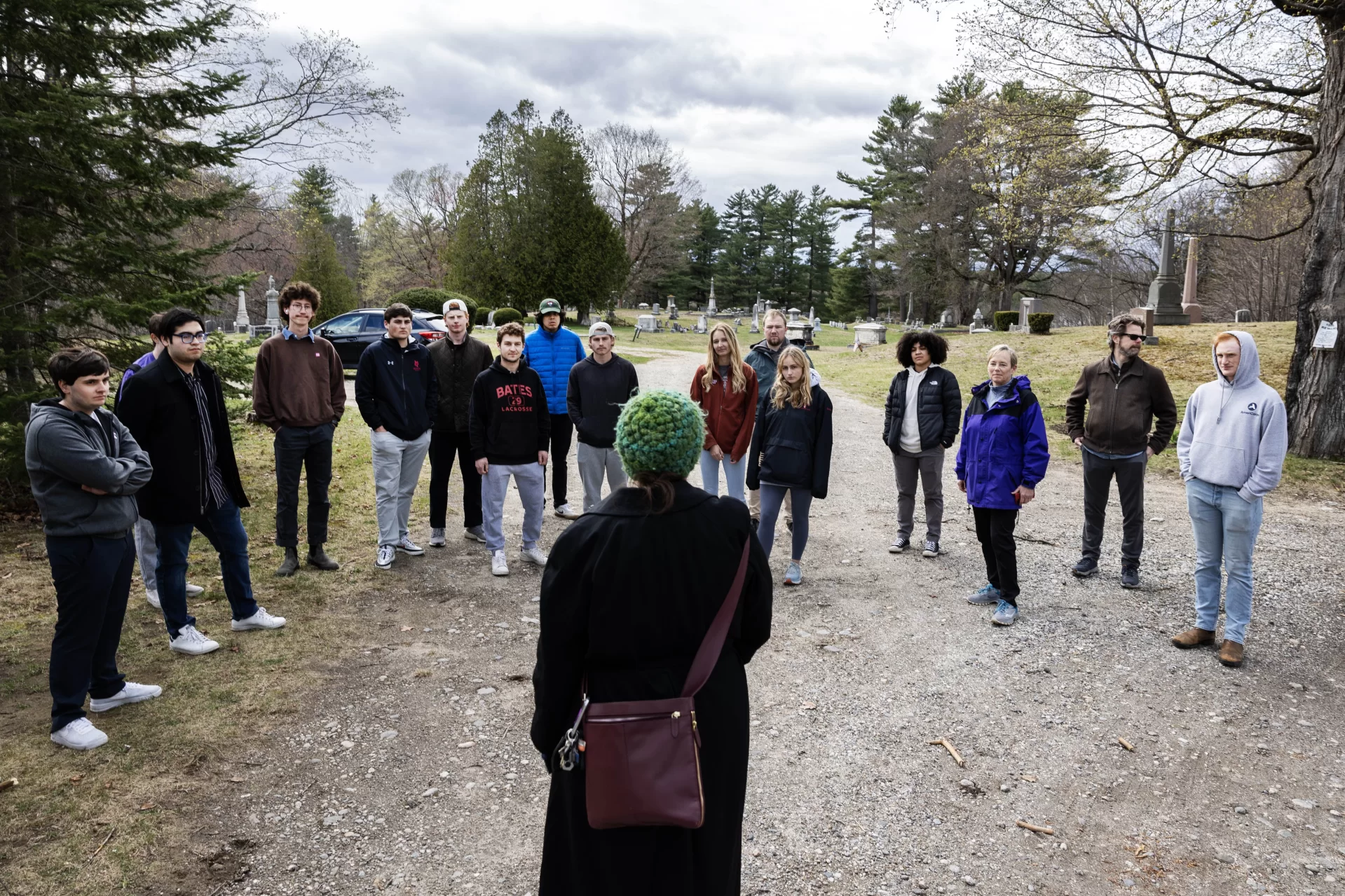
She hopes a future version of the course can tell those stories. “A cemetery strikes me as a place that is in some ways so peripheral to the city and in other ways really central to it. It holds all of this history.”
Riverside, she explained, was founded in the 1840s as part of the rural or garden cemetery movement. “That means it was designed as a place to walk around in,” she said. “Even on a cloudy, rainy day in April, the cemetery’s sloping hills and clear-cut wooded paths invite a visitor to stroll and explore.
“So part of the point of this class is that we would like to get people to explore this beautiful green space in Lewiston more. It’s a place of rest and contemplation but also a place to interact with nature” said Shrout, who read the group a quote from an 1863 issue of the Lewiston Falls Journal: “Riverside is a place for promenades and walks as well as a resting place for the dear ones who have gone before.”
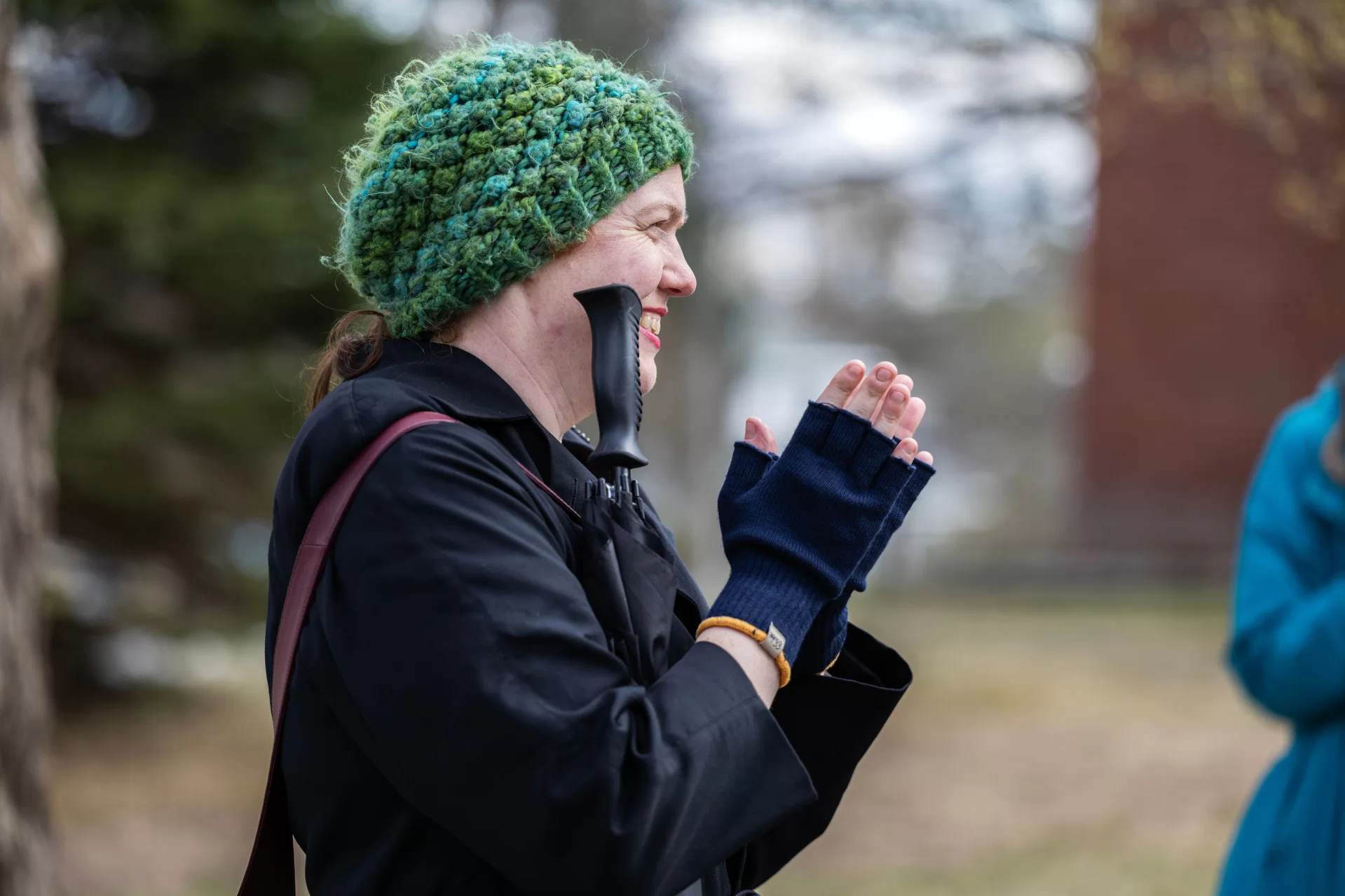
In the course students split into three groups to study the lives — and deaths — of three groups of people buried in Riverside: Civil War veterans, immigrants to Lewiston, and Maine industrial workers.
A visitor who enters the cemetery merely needs to insert earbuds and go to the Echoes app to find the tour. Once the listener is within a certain proximity to a grave, the narration begins, first with a brief description of the gravesite, then a story about the person’s life and death. A background of crunching gravel, “battle” sounds, or industrial machine noises adds to the immersive experience.
Shrout’s course gave students a chance to be detectives; each group chose five or six people buried in the cemetery, then tracked down information about each person’s life. They started with the cemetery’s burial book. “It lists everyone who is buried here, all the way up to the present,” she said. “It’s a living document.”
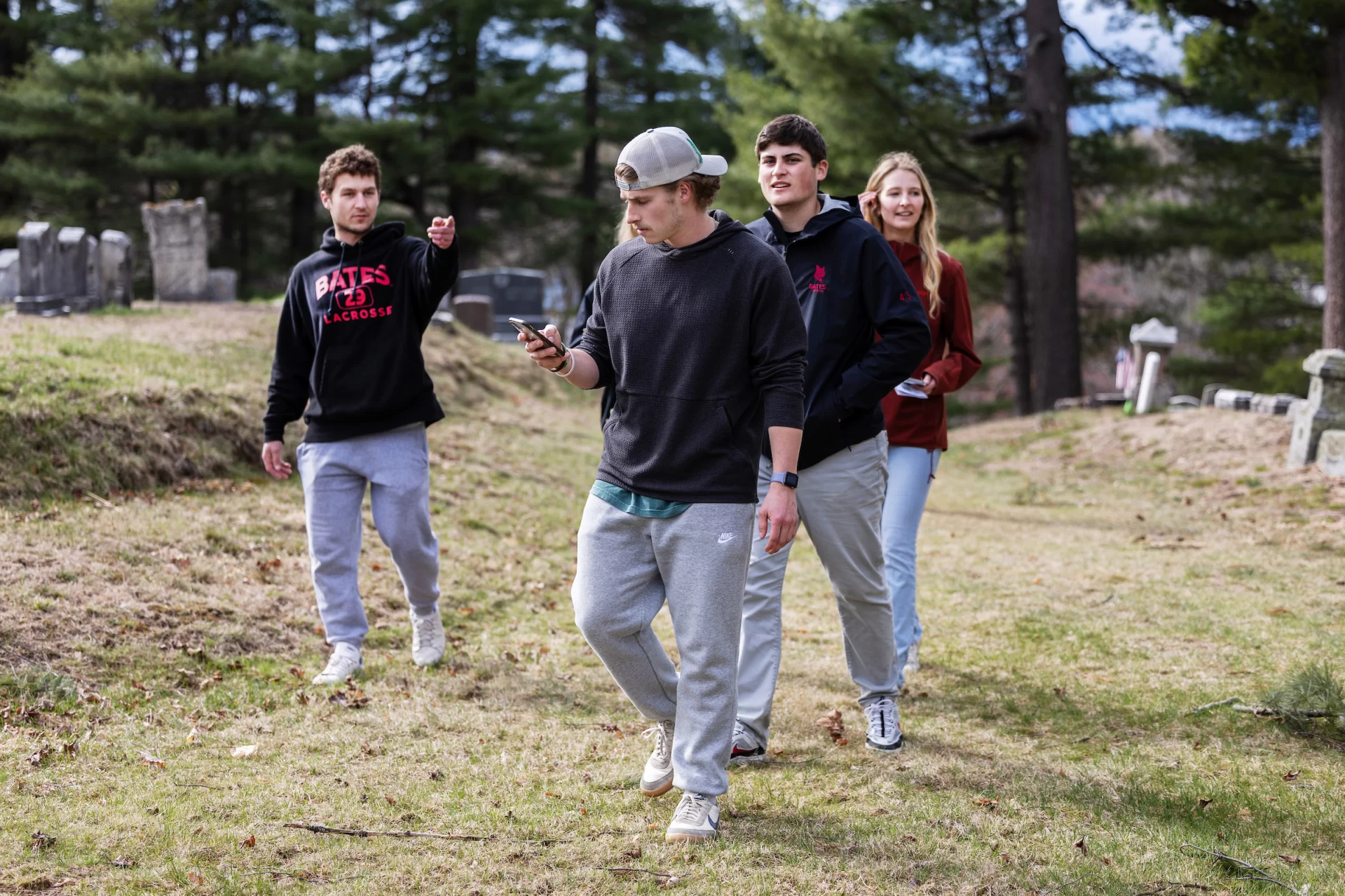
The students then scoured historical records, everything from online sources like Ancestry.com to physical records held in the Muskie Archives and Lewiston’s Maine Museum of Innovation, Learning, and Labor (MILL) — anything that could tell them how the person lived and died.
The group researching industrial workers told the story of Wilhelm Kramer, which was a reminder of how the Industrial Revolution often created treacherous work conditions, and how safety regulations wouldn’t arrive for nearly a century (the Occupational Safety and Health Administration wasn’t founded until 1971).
The Civil War group elevated the story of George Leland, a Union sailor during the Civil War who won the Medal of Honor for helping to free his grounded ship, the USS Lehigh, after it ran aground.
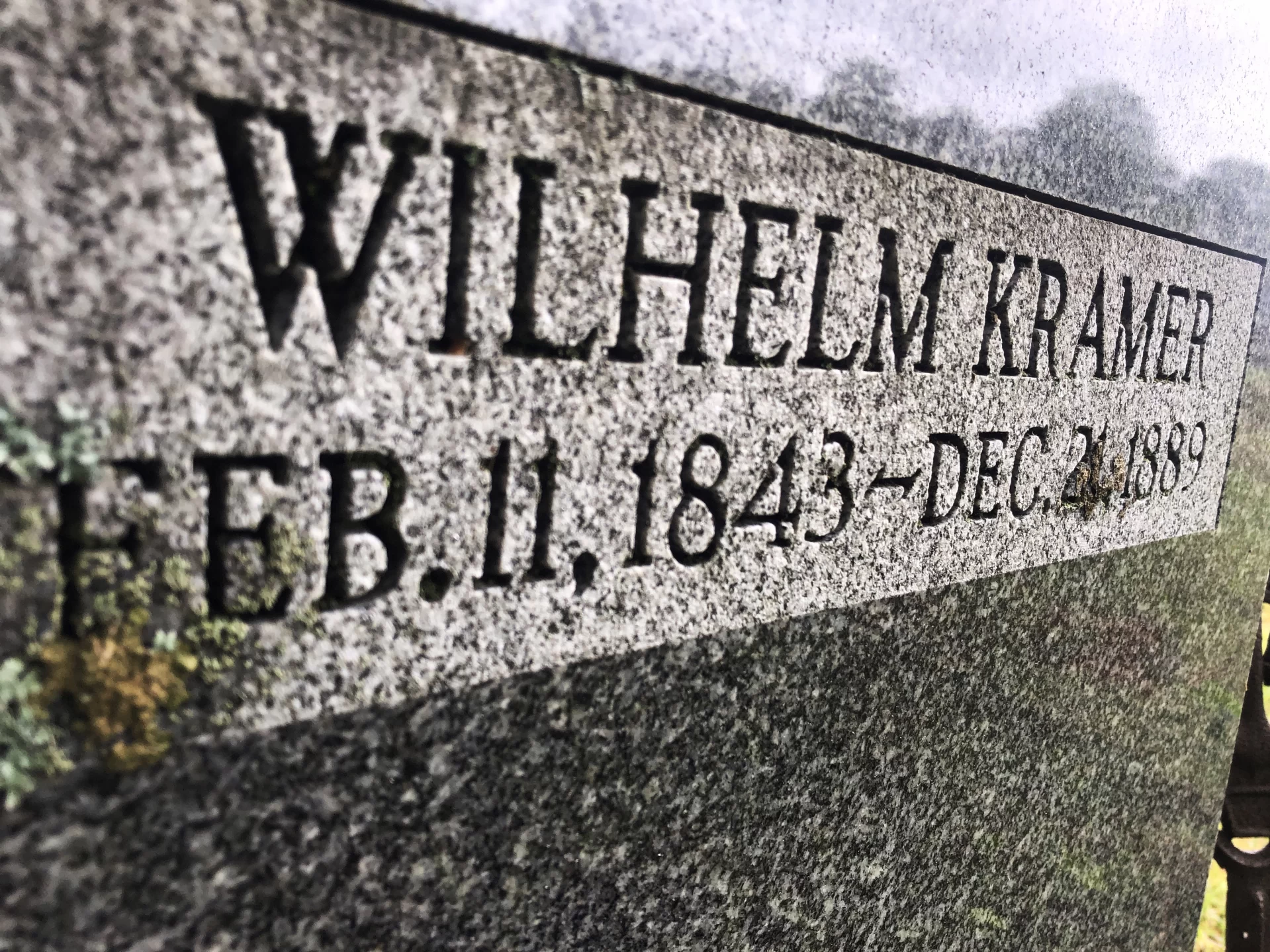
The immigrant group, meanwhile, told the story of Charles Peasely, who emigrated from Scotland to Lewiston and became a boss dyer at the Cowan Woolen Mill. He died of heart failure at the age of 35, in 1903, a time when the average age of death for men was 49 years old, and when pneumonia, influenza, tuberculosis, and heart disease were the leading causes of death.
“The causes of death were a lot of diseases that we don’t have to worry about — we take it for granted,” said Mick Burden ’23 of Kenilworth, Ill. “That was interesting, learning and seeing how even in a hundred years things have changed so much as far as medicine and healthcare.”
Burden said the course gave him and others a chance to think about themselves as historical preservationists and “what it means to be a public historian, what it means to create something for your community and through your community.
“We got to be mini public historians, which was fun.”
